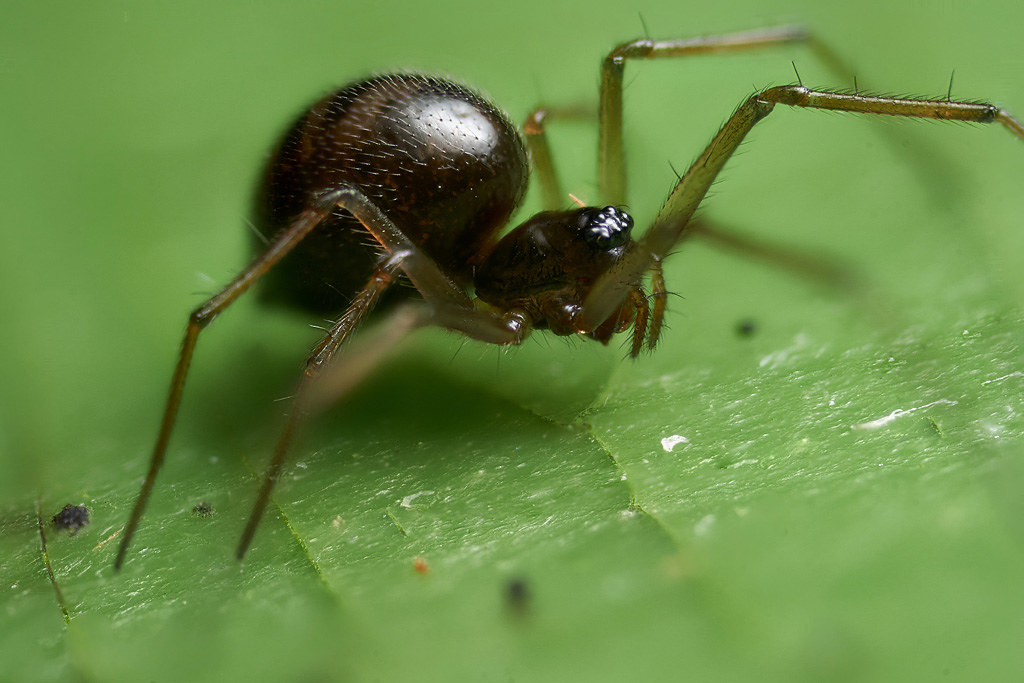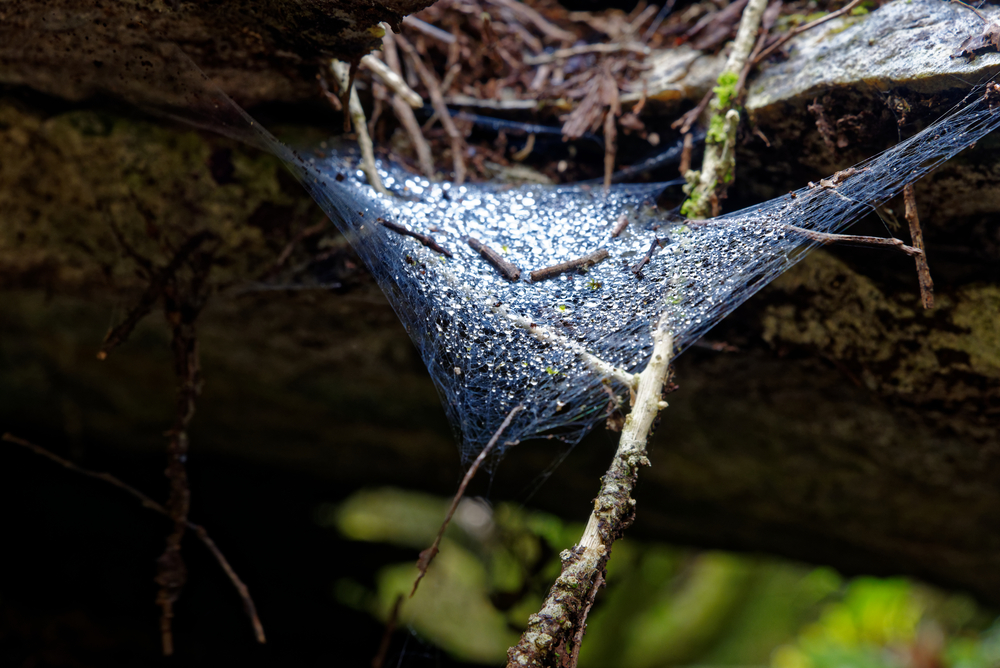Money spiders belong to the second largest family of spiders, the Linyphiidae, which consists of approximately 4706 species worldwide. With over 280 different species of money spider, they are one of the most common spiders found in the UK.
Also known as sheet weavers in many parts of the world, these tiny little creatures are known to build large webs for catching prey which resembles silk sheets, hence their name.
Also, for the superstitious among us, money spiders are thought to bring new wealth, hence their other more common name.
How To Identify a Money Spider
Money spiders are a relatively small species and typically between 2-2.5 mm long. In general appearance, it looks much like other members of its family (Linyphiidae).
Male spiders are exceptionally black in colour with a red abdomen, and their mouthparts are dark brown or black. The females are typically the same, but they tend to have slightly paler abdomens with a light brown pattern in them.
Its spiderlings are typically grey with white stripes running through their bodies, although these can become more grey as they mature.
It’s usually very hard to identify exactly which species and sex you’re looking at with the naked eye due to their tiny size. Better clarification can be obtained with a microscope or a hand glass.

Where Can You Find Many Spiders?
The money spider is abundant worldwide and is one of the most common when it comes to UK spiders.
It prefers habitats with dense shrubs, dwarf conifers, bushes, and low-lying vegetation that are full of life. Their webs are typically covered by plants or other plant debris. Additionally, it prefers areas with high humidity due to its inability to survive in an arid environment.

What Do Money Spiders Eat?
Money spiders feed on flying insects caught in their webs, including various bug species such as beetles, springtails, flies and other spiders.

Are Money Spiders Harmful To Humans?
Money spiders are not venomous and pose very little threat to us. Although they have been known to bite when accidentally threatened, their bites cause no more than a small patch of itchy irritation, which passes rather quickly.
Why Do They Call It a Money Spider?
Superstition would have it that if a money spider is found crawling on you or in your hair, it’s likely here to spin you new clothes, hence the association with new money.
Although there is no proof that these spiders bring financial good fortune, they can indicate good luck to many, especially if they land on you. This often happens due to a process called ballooning. Money spiders can often travel up to 100 miles through the air, almost flying, due to rising air currents. The spider lets out a strand of silk, and is carried away with the wind, often landing on people as the air cools. So, if a money spider lands on you, for many, it’s considered to bring good luck.
Additional Resources
Sources and References
- Linyphiidae – en.wikipedia.org
Sam loves to learn about animals and their habitats. He has been a nature lover from a very young age, and has been writing papers and articles about wildlife for as long as he can remember.
